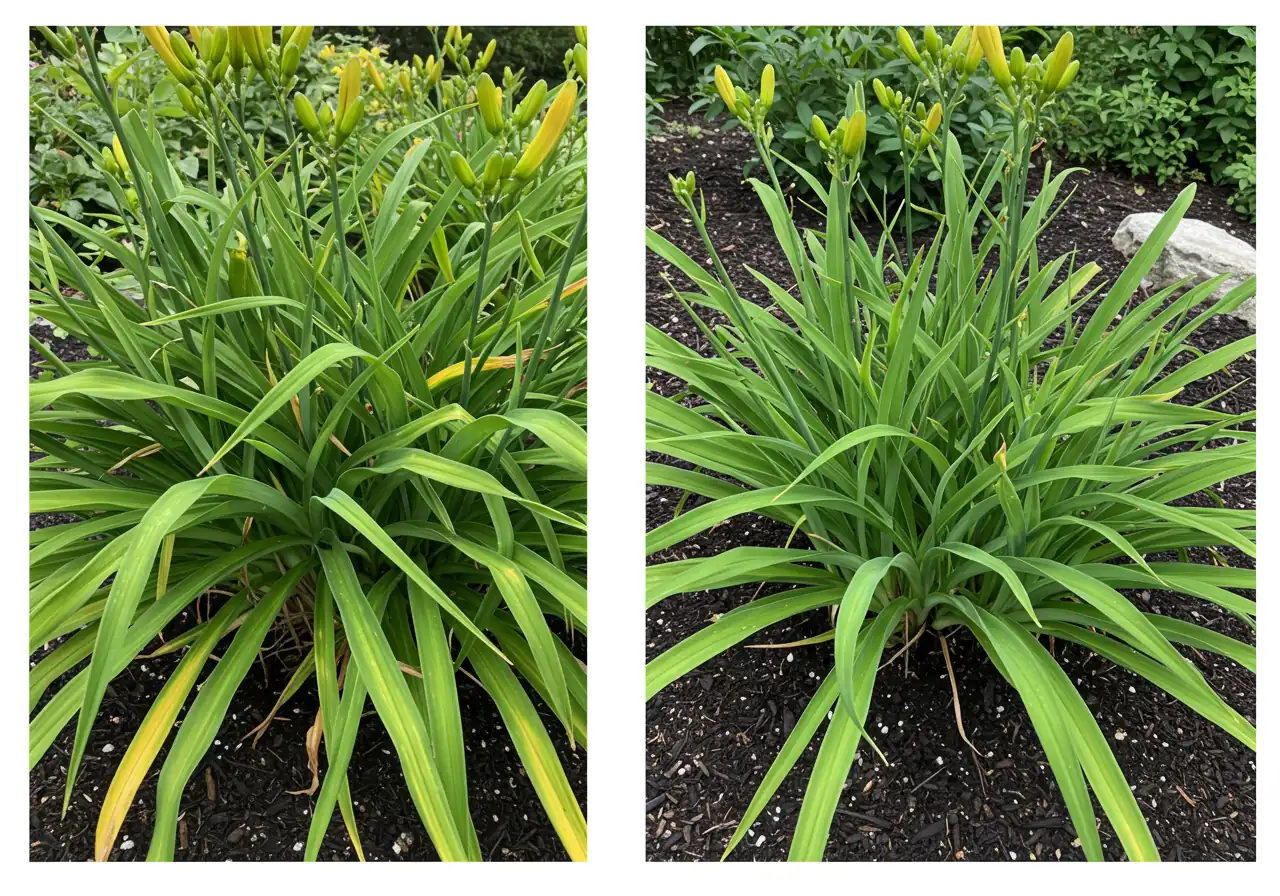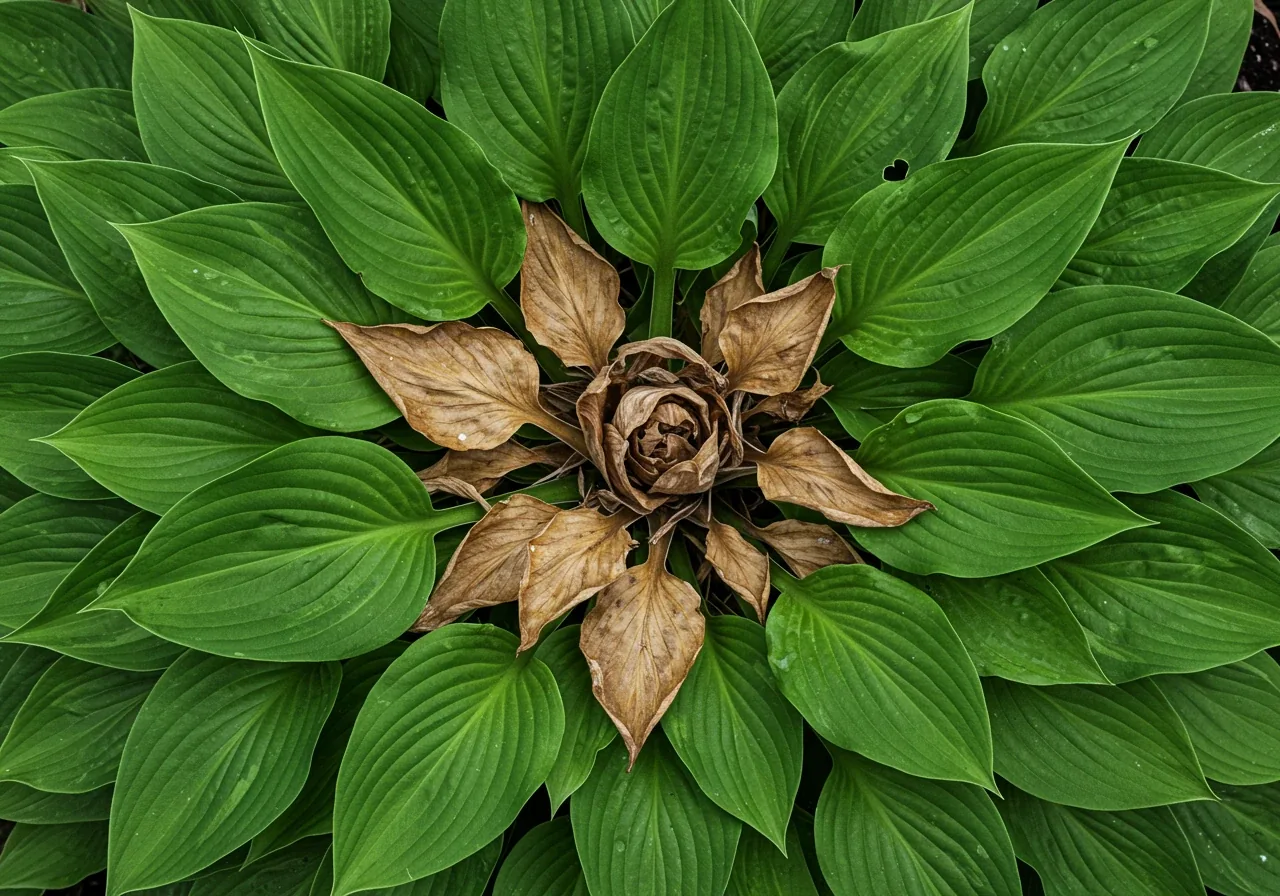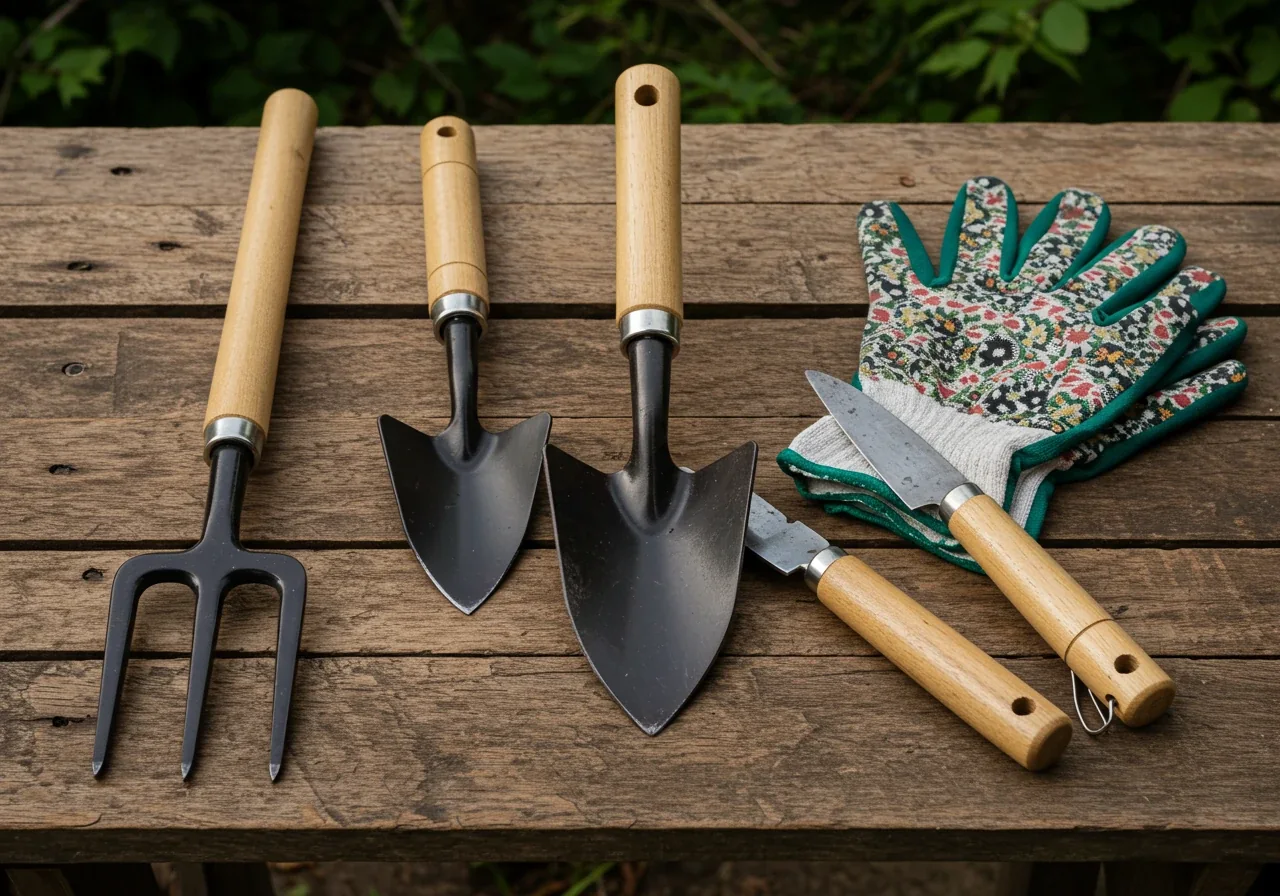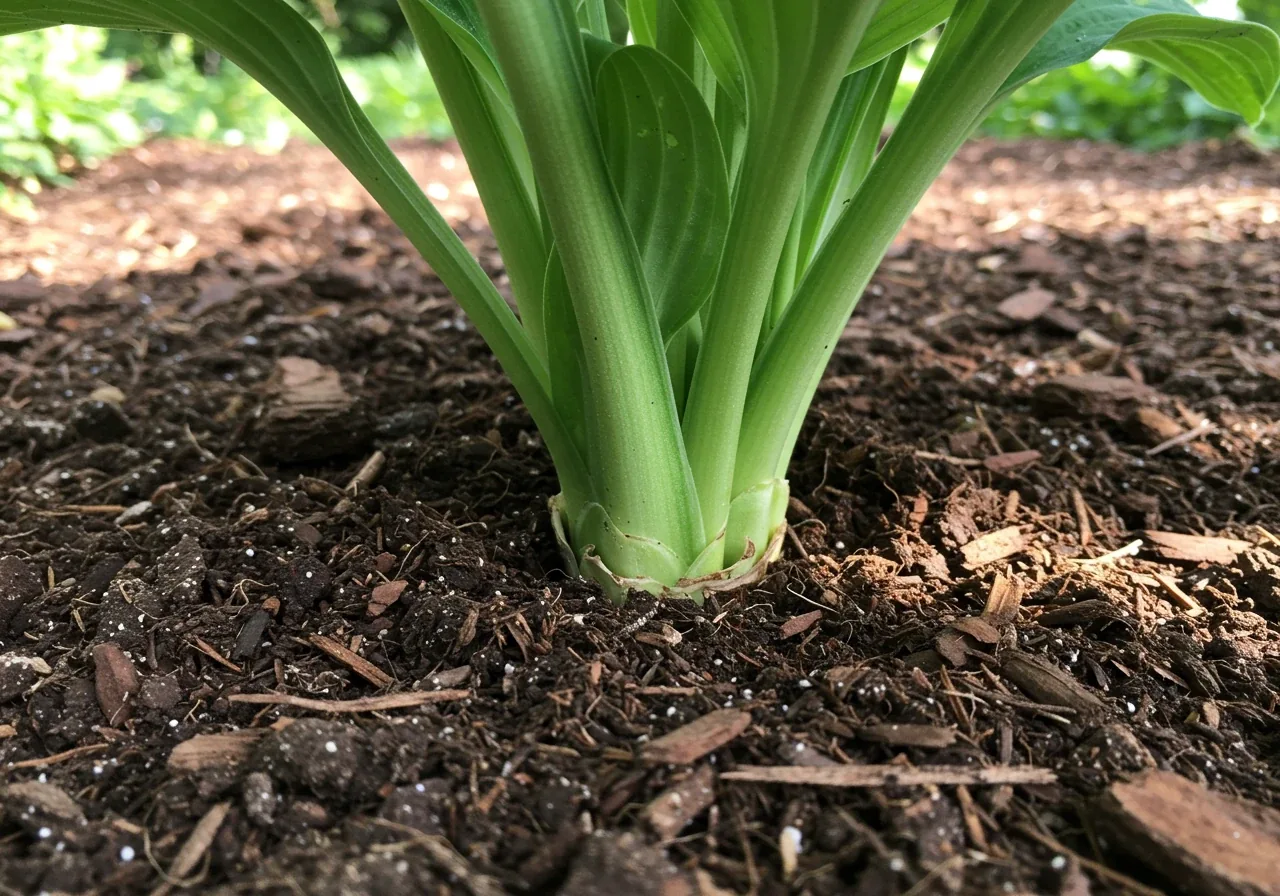Thin Crowded Kars Perennials: Prevent Disease This Fall
Ready to tackle your fall garden chores? Get a head start!
Request Your Free Quote TodayQuick Takeaways
- Thinning overcrowded perennials in fall improves air circulation, reducing fungal diseases like powdery mildew.
- Dividing plants like Hostas and Daylilies revitalizes them and prevents weak centers.
- Fall is the ideal time (4-6 weeks before ground freeze) for dividing most perennials in the Ottawa region.
- Essential fall cleanup includes removing diseased foliage and applying mulch correctly.
- Proper thinning leads to stronger plants better able to survive Ottawa winters.
Introduction: Give Your Kars Perennials Breathing Room This Fall!
Well, another Ottawa growing season is winding down, and let's be honest, sometimes our gardens get a little *too* enthusiastic! Your beautiful perennial beds, whether you're in Kars, Greely, or anywhere nearby, probably put on quite a show this summer. But maybe they put on *too much* of a show? Over time, those lovely perennials like Hostas, Daylilies, or Bee Balm spread out, getting bigger and bigger. Soon, they're practically elbowing each other for sunlight and space, like folks trying to get the last BeaverTail at Winterlude!
This cozy arrangement isn't great for plant health. When perennials get overcrowded, air can't circulate properly, creating a perfect hangout for fungal diseases (hello, powdery mildew!) and unwelcome pests. Think of it like being stuck in a crowded elevator – nobody enjoys that lack of personal space, least of all your plants! Plus, they compete fiercely underground for water and nutrients, leading to weaker growth overall.
The fantastic news? Fall is the *ideal* time for a little garden intervention. Giving your perennials a good thinning or dividing now sets them up for a healthier, happier, and more beautiful show next spring. It's one of the best fall garden tasks you can do for long-term landscaping success. Let's dive into how you can give your plants the breathing room they deserve! Looking for help with general lawn care to complement your beautiful beds? We can help with that too.
Why Fall Thinning is Your Secret Weapon Against Perennial Problems in Ottawa

Okay, let's talk Ottawa gardening realities. Our summers can be wonderfully warm, but oh boy, can they get humid! And then comes winter, which... well, we all know about Ottawa winters and the delightful freeze-thaw cycles they bring. This unique climate combo can be tough on our perennial pals, sometimes turning lush gardens into potential breeding grounds for grumpy diseases and other issues. But fear not, there’s a secret weapon in your fall gardening toolkit: thinning!
Think of your perennials crowding together after a full season of vigorous growth – Hostas sprawling, Daylilies multiplying like rabbits. It's like a packed OC Transpo bus during rush hour – zero airflow! That stagnant, humid air trapped between leaves is basically rolling out the welcome mat for fungal diseases like powdery mildew and leaf spot, especially during our muggy late summer days. Yuck. Thinning out some of those stems or even dividing the whole clump creates much-needed space. *More space = better air circulation*. Better air circulation means leaves dry faster after rain or morning dew, making it way harder for those pesky fungal spores to get established and spread. It's like preventative medicine for your plants! You're essentially stopping problems before they even start, which is a key part of good fall plant care, especially in challenging clay soil where drainage might already be an issue.
So, how does this simple act help with surviving our notorious Ottawa winters?
- Stronger Plants: Overcrowded plants often have weaker, competing root systems. Thinning gives the remaining stems or the newly divided sections better access to water and nutrients, helping them build stronger roots before the ground freezes.
- Reduced Rot Risk: Dense clumps trap moisture at the plant's crown (where stems meet roots). This moisture, combined with decaying leaves and winter wetness, is a recipe for crown rot, especially during those unpredictable freeze-thaw periods. Thinning allows the base of the plant to dry out better, significantly reducing this risk.
Great candidates for fall thinning or dividing include Hostas, Daylilies, Siberian Irises, Bee Balm, and ornamental grasses. You can thin simply by removing some of the older or weaker stems right at the base, or you can dig up and divide the entire clump. If you're tackling division, get some great insights from our guide on dividing perennials for renewed garden vigor in Richmond or explore these general tips for fall plant division and garden revival. It's also smart to make a note of which plants looked particularly crowded or suffered from disease this year – using tips for keeping garden records helps plan next spring's care.
Thinning Makes a Difference
| Condition | Airflow | Disease Risk | Plant Strength | Winter Risk |
|---|---|---|---|---|
| Crowded Perennials | Poor | Higher | Weaker | Higher (Rot/Damage) |
| Thinned Perennials | Good | Lower | Stronger | Lower (Rot/Damage) |
Whether you're tending a garden in Barrhaven or Osgoode, taking the time for fall thinning pays huge dividends. And if the cleanup afterwards seems daunting, remember that help is available! A service like our Richmond property cleanup service can handle the debris, leaving you more time to enjoy the fall colours. Need help in Metcalfe? Check out the Metcalf property cleanup service.
So, grab those clean, sharp pruners or a spade and give your perennials some elbow room this autumn! It’s a straightforward task that acts as a powerful defence against common perennial problems, ensuring a healthier, more vibrant garden next spring. If the job feels too big or you need a hand with other fall tasks, explore our comprehensive landscaping services. Happy thinning!
Identifying the Usual Suspects: Which Overcrowded Perennials Need Attention in Your Greely Garden?

Okay, garden detectives of Greely and surrounding neighbourhoods like Osgoode and Nepean! Time to put on our investigation hats and scope out the usual suspects – those enthusiastic perennials that sometimes forget about personal space and start taking over the garden bed. It happens to the best of us; one season you have lovely, distinct plants, and the next, it looks like a botanical rugby scrum!
So, which plants are most likely pushing their neighbours around in your Ottawa-area garden? And more importantly, how can you tell they've officially gone from "looking full" to "desperately needing thinning"? Keep an eye out for these classic signs of overcrowding:
- The Dreaded Donut: Does your plant clump have a sad, empty, or dead-looking spot right in the middle, while all the lively growth is happening around the outer edges? This is a textbook sign of overcrowding, especially common in favourites like Hostas and many Daylilies. The oldest part of the plant in the centre just gets choked out and tired.
- Flower Power Fizzle: Is a plant that usually puts on a spectacular flower show suddenly producing fewer blooms, or maybe the flowers it *does* produce are smaller than usual? When perennials get too crowded, they're all fighting underground for the same water and nutrients. This intense competition often means less energy goes into producing those beautiful blossoms. Bee Balm (Monarda) and some varieties of Tickseed (Coreopsis) might show this symptom.
- The Big Flop: Are the stems weaker and floppier than normal, leaning heavily on neighbours or collapsing outwards? While heavy rain can cause temporary flopping, chronic floppiness in plants that are usually upright (like some tall Sedum varieties or even certain Ornamental Grasses) can indicate the stems are weak from overcrowding and lack of light/air at the base.
- Elbows Out: This one's pretty straightforward – can you barely see the mulch between plants anymore? Are different perennials literally growing *into* each other, their leaves mashed together? If it’s hard to tell where one plant stops and the next starts, it’s definitely time for intervention!
Common Culprits in Our Climate:
Around Greely and Ottawa, some perennials are just naturally vigorous spreaders. Be extra watchful of:
- Hostas: Kings and queens of expanding their territory. That donut centre is often the first clue.
- Daylilies (Hemerocallis): They multiply generously! Eventually, the clumps get so dense that flowering suffers.
- Bee Balm (Monarda): Famous for spreading, and very prone to powdery mildew if air can't circulate through the clump. Thinning is essential for health.
- Siberian Iris: Forms dense clumps that benefit from division every few years to keep blooming well.
- Lamium (Dead Nettle): While a groundcover, it can aggressively overtake less vigorous neighbours.
Keeping these enthusiastic growers in check is a vital part of good Garden Maintenance. If you're seeing these signs, fall is your window of opportunity. For plants like Bee Balm, simply cutting out some of the oldest or weakest stems at the base can work wonders. For the donuts (Hostas, Daylilies), it's usually best to dig up the whole clump, divide it into healthier sections, and replant. Remember, good Soil Preparation before replanting those divisions gives them the absolute best chance to thrive next year.
Dealing with the leftover roots, soil, and plant bits after dividing can create a bit of a mess. If you're tackling a big job and happen to be near Richmond, our dedicated Richmond property cleanup service can handle the debris removal for you. For those elsewhere in Ottawa, our general City property cleanup service covers broader areas. Unsure about which plants need dividing or feeling overwhelmed by the task? Just Contact Us – we're happy to help figure things out. Imagine getting your quote, booking the service online, and seeing that satisfying Thank You confirmation pop up – garden chores handled! Giving your perennials breathing room now is a gift to your future garden.
Key Signs Your Perennials Need Thinning
- Donut Hole: Dead or weak center in the plant clump.
- Reduced Flowering: Fewer or smaller blooms than usual.
- Floppy Stems: Weak stems collapsing outwards.
- No Space: Plants growing directly into each other.
Watch These Spreaders in Ottawa Gardens
- Hostas
- Daylilies (Hemerocallis)
- Bee Balm (Monarda)
- Siberian Iris
- Lamium (Dead Nettle) - Groundcover
- Some Ornamental Grasses
Why Address Overcrowding?
Ignoring overcrowded perennials leads to:
- Increased risk of fungal diseases (powdery mildew, leaf spot).
- Higher chance of pest infestations.
- Weakened plants due to competition for resources.
- Reduced aesthetic appeal and flowering performance.
- Potential for winter rot and damage.
Learn more about our approach to About Us.
The Great Divide: Your Step-by-Step Guide to Thinning Perennials Like a Pro (Even in Winchester!)

Okay, garden gurus of Winchester and beyond! You've figured out *why* you need to divide those sprawling perennials (thanks, previous sections!) and *which* ones are giving you the side-eye. Now, let's roll up our sleeves and get to the nitty-gritty: the actual dividing! Don't worry, it's easier than assembling flat-pack furniture, I promise. Here’s your step-by-step guide to making the cut like a landscaping pro.
The Great Divide: Step-by-Step
1. Timing is Key
Aim for late summer/early fall (4-6 weeks before ground freeze) in areas like Winchester, Vernon, Kenmore. Cool, overcast days are best.
2. Gather Tools
Spade/fork, sharp knife/pruners, tarp/wheelbarrow, gloves, water source.
3. Extract the Plant
Water beforehand if dry. Dig around the clump, lift carefully with roots, place on tarp.
4. Clean & Assess
Shake/rinse off soil to see roots and crown. Identify healthy sections with shoots/buds.
5. Divide!
Gently tease apart fibrous roots (Hostas) or use forks/knife. Cut tougher roots (Grasses). Ensure each division has roots and shoots.
6. Replant
Prepare hole with compost. Plant divisions at original depth. Firm soil.
7. Water Well
Deeply water new divisions to settle soil and remove air pockets. Keep moist.
8. Mulch
Apply 2-3 inches of mulch, keeping it away from stems/crowns.
Dealing with the Leftovers (Eco-Friendly Edition):
What about the old, tired centre of the clump or extra divisions? Compost the unhealthy bits! Healthy extras make fantastic gifts for neighbours or fellow gardening enthusiasts. Sharing is caring, right? If you end up with a significant amount of plant debris and soil, especially after a large project, managing the cleanup can be a chore. For residents near Marionville needing assistance, options like a Marionville property cleanup service or a specific Marionville garden clean up service can take that task off your hands. Elsewhere in the city, a general City garden clean up service is available. Tackling division is a key part of annual City garden maintenance service.
And that's it! You’ve successfully divided your perennials. Give yourself a pat on the back. Imagine the relief, like hitting submit and seeing that satisfying Thank You page confirm your booking if you decided to get professional help. If you ever feel unsure about tackling this yourself, remember the team behind Clean Yards has plenty of experience – you can learn more About Us and how we help Ottawa gardeners thrive. Happy dividing!
Beyond the Divide: Essential Fall Cleanup for Disease-Free Beds from Barrhaven to Russell

Okay, team, let's keep the momentum going! You've bravely faced the challenge of dividing those over-enthusiastic perennials (or maybe you're planning to!). But wait, there's more! Giving your plants elbow room is a fantastic start, but for truly sparkling, disease-free garden beds from Barrhaven all the way out to Russell and Embrun next spring, we need to tackle a few other essential fall cleanup tasks. Think of it as the final polish after the main event.
Essential Fall Cleanup Steps:
- Operation: Leaf Lockdown (The Cleanup Crew): This is probably the *most* important fall cleanup chore for disease prevention. Don't let diseased leaves hang around! Foliage showing signs of powdery mildew, black spot (pesky on roses!), iris leaf spot, or peony blotch can harbor fungal spores or insect eggs that will happily overwinter and cause trouble again next spring.
- Action: Cut back affected perennial foliage right down to the base (usually a few inches above ground). *Don't* just leave it lying there! Rake up and remove *all* fallen leaves and debris from your garden beds. Bag it up for municipal pickup (check City of Ottawa Green Bin Guidelines) or dispose of diseased material. This thorough cleaning is a big part of any effective property clean up. Need help with a bigger job in Ottawa? Consider the Ottawa property cleanup service.
- Tuck 'Em In (But Not Too Tight!): Mulching Magic: A good layer of mulch is like a cozy winter blanket for your plant roots, protecting them from the harsh freeze-thaw cycles common in Ottawa. It helps insulate the soil and retain moisture.
- Action: Apply about 2-3 inches of organic mulch (like shredded bark, straw, or chopped leaves) *after* the ground has started to cool down, but before it freezes solid. The key? Keep the mulch *away* from the plant crowns (the very base where stems emerge). Piling mulch right against the stems creates a damp haven perfect for rot and voles looking for a winter snack. Need advice on what type of mulch works best for your soil and plants? Check out our tips on garden material selection.
- Feed the Soil (It's Hungry Too!): Healthy soil = healthy plants. Fall is a great time to give your garden beds a little nutritional boost. For local soil advice, consult resources like the Master Gardeners of Ottawa-Carleton.
- Action: Gently spread a layer of compost or well-rotted manure over the soil surface after cleanup. You don't even need to dig it in vigorously; winter's freezing and thawing action, plus earthworms, will help incorporate it naturally. This improves soil structure and adds valuable nutrients for next year's growth.
- Last Call for Water: Don't turn off the hose taps too early! While perennials going dormant need less water, newly planted divisions, shrubs, trees (especially evergreens!), still appreciate a good drink before the ground freezes solid.
- Action: Water deeply and thoroughly if the fall has been dry, particularly for anything newly planted or divided, and for your evergreen trees and shrubs which continue to lose moisture through their needles/leaves even in winter. Ensure the soil is moist (not waterlogged) going into freeze-up. Check resources like the Rideau Valley Conservation Authority for water conservation tips.
Tackling these tasks might seem like extra work after a long gardening season, but trust us, your future self will thank you when spring arrives with healthier, more vibrant plants. It's all part of creating a resilient landscape. If the list feels overwhelming, remember that professional help is available. Whether you need a full Ottawa property cleanup service or something more specific like the Marionville yard cleanup service for those further east, getting assistance can make fall cleanup a breeze. Understanding the scope and commitment involved in professional services is also key; you can learn more about what to expect by reviewing standard agreements, similar to our own terms and conditions and privacy policy. The friendly team you can learn about on our About Us page is dedicated to helping Ottawa homeowners achieve beautiful, healthy yards. So, clean those leaves, mulch wisely, and get ready for a fantastic spring!
Pro Tip Central: Quick Wins for Thriving Perennials
Quick Fall Perennial Care Tips
- Divide Before the Big Freeze: Timing is key! Aim for early fall, roughly 4-6 weeks before the ground usually freezes solid here in the Ottawa area (check local forecasts). This gives those newly separated roots time to settle in before winter hibernation kicks in. Your Hostas and Daylilies will thank you!
- Spot the Signs: Not sure *which* plants need attention? Look for the classic "donut hole" (dead centre, growth around the edges), noticeably fewer flowers than usual, or plants literally growing into their neighbours. That's your cue to intervene!
- Clean Cuts & Happy Roots: Use a sharp spade or even an old serrated knife for tough clumps. When replanting your divisions, make sure they sit at the *same* soil depth they were originally growing – planting too deep is a common mistake!
- Tidy Up is Non-Negotiable: Seriously, don't skip this! Remove *all* fallen leaves and especially any diseased-looking foliage from around your perennials. This prevents pests and diseases from overwintering. If the debris pile gets out of hand, remember help is available, whether you're near Metcalfe looking for the Metcalf property cleanup service or need a general Ottawa yard cleanup service for the wider region. Folks further east can explore the dedicated Marionville yard cleanup service, or check out the Metcalf yard cleanup service and City yard cleanup service options.
- Share the Wealth (or Fill the Gaps): Got healthy extra divisions? Perfect! Use them to expand your garden beds – our team can assist with a professional garden install to create beautiful new spaces. Or, if dividing left some awkward bare patches in the lawn nearby, sometimes professional sod installation offers the quickest way to get things looking lush and tidy again around your refreshed perennial beds.
Impact of Thinning on Disease Risk
*Illustrative data showing potential reduction in fungal disease incidence.
FAQs: Your Ottawa & Kars Perennial Thinning Questions Answered
Absolutely! Powdery mildew thrives in damp, still air – exactly what you get in crowded Hosta clumps. Thinning or dividing improves air circulation dramatically, letting leaves dry faster after rain or dew. This makes it much harder for mildew to establish. Clean up any infected leaves this fall too! You can see the difference good airflow makes in our gallery of garden transformations.
Ah, Ottawa clay! It can be a workout. Try watering the area a day *before* digging to soften it slightly (don't make mud!). A sturdy digging fork often penetrates heavy soil better than a spade. When you replant the divisions, mix some compost into the planting hole – this really helps improve drainage and soil structure over time. Consider our soil preparation services for larger areas.
Generally, yes! Ottawa's Green Bin program accepts most garden waste like foliage, roots, and weeds. Double-check the City's current guidelines just in case. *Avoid* composting diseased plant material unless you're sure your compost gets hot enough. If you end up with a mountain of debris, a professional City yard cleanup service like ours, or specific services like the Ottawa garden clean up service or Metcalf garden clean up service, can make disposal easy.
Yes, mulching after dividing is smart! Once you've replanted and watered, apply a 2-3 inch layer of organic mulch like shredded bark or chopped leaves. This insulates roots from harsh freeze-thaw cycles. *Key tip*: Keep mulch pulled back slightly from the plant's crown (base) to prevent rot over winter. Proper mulching and edging tidies beds nicely too.
Definitely! Tackling an overgrown garden cleanup, especially after dividing lots of plants, can generate a surprising amount of debris. If you're located near Metcalfe, our specialized Metcalf yard cleanup service is designed exactly for that – removing excess plant matter, old leaves, and weeds, leaving your garden beds neat and ready for winter dormancy. We also offer a targeted Metcalf garden clean up service.
The cost really depends on how many plants need attention and how large or dense the clumps are. Every garden is unique! The best approach is to request a personalized quote for your specific situation. We aim for clear pricing, and always value hearing your thoughts via our estimate feedback form after you've reviewed your quote.
Conclusion: Healthy, Happy Perennials Start This Fall in Kars!
So, there you have it! Giving your perennials a little breathing room this fall isn't just another garden chore; it's like giving them a spa day before their long winter nap. By tackling overcrowding now – whether through gentle thinning or the 'great divide' – you're setting the stage for a spectacular spring show in your Kars garden beds. Remember, better airflow means fewer grumpy fungal diseases, and less competition means stronger, more resilient plants ready to face whatever an Ottawa winter throws at them. Think of the vibrant colours and robust growth you'll see next year – it's totally worth a bit of effort now! Your Hostas and Daylilies will practically send you thank-you notes.
Taking these simple steps this autumn helps ensure your landscaping investment pays off with season after season of beauty. Don't let your lovely plants get lost in the crowd!
- Ready to DIY but want more tips? Explore our other blog posts or feel free to Contact Us with your specific questions. We love helping fellow garden enthusiasts succeed!
- Feeling overwhelmed or short on time? Let us handle the heavy lifting! Our friendly team offers professional perennial dividing, fall cleanup, and other landscaping services right here in Kars, as well as neighbouring areas like Manotick, Greely, Osgoode, and across Ottawa South. Get your free quote today and look forward to a healthier garden next spring! Check our Marionville garden clean up service page if you're in that area.
Happy fall gardening!

